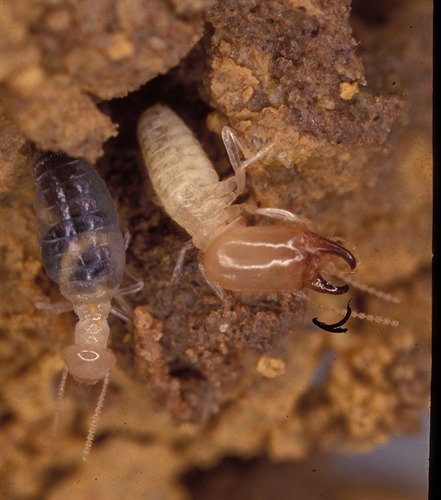
Back
Macrotermes carbonarius (Hagen, 1858)
| Family Name: | Termitidae |
| Taxonomic Group: | Invertebrates (Termite) |
| Common Name: | Giant Termite |
Name
Ecology, Habitat & Location
| Ecological Notes | Coastal forest areas on well drained soils. Feeding, like most termites on dead wood such as fallen trees, this spectacular termite is not so much rare as extremely local in Singapore and is certainly not endangered elsewhere within its rather wide distribution across South-east Asia. The reason for including it is that it is a marker species for soil type and vegetation which has been more severely threatened by development than almost any other on Singapore island. The well drained lowland soils that it favours are among the easiest to convert to agriculture and were the first to be extensively alienated. Almost none of the distinctive coastal forest formation survived into the current century. The two places where this termite is known to survive are a few colonies in the Labrador Nature Reserve and a really good population at Loyang where its favoured soil conditions but upon a small area of extreme back mangrove that is of great biological interest in its own right. Like most social insects, there are a large number of very peculiar organisms symbiotic with them, and the Loyang colony is known to have unique beetles, spring-tails, wood-lice and other small wildlife, many of them still undescribed, which live together with termite. One truly rare termite found in the nest of Macrotermes is Euhamitermes hamatus. |
|---|---|
| Habitats | Forest |
| Distribution | Widespread in South-east Asia. |
| Nature Reserves | Labrador Nature Reserve |
Conservation
| Trends & Threats | Development of habitat. |
|---|---|
| Scientific Interest & Potential Value | Potential tourist attraction, being large, sometimes foraging in the open (though usually around dawn or dusk) and both ther |
| Conservation Notes | Protection of the Loyang site is required. |
Status
| Singapore Red Data Book Status | Vulnerable (VU) [2008] |
|---|
Photos
References
| References | Davison, G.W.H., Ng, P.K.L. & Ho, H.C (Eds.). 2008. The Singapore Red Data Book (2nd Edition). Singapore: Nature Society (Singapore). 285pp |
|---|
